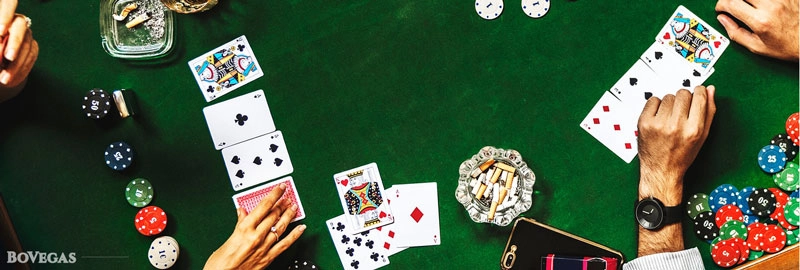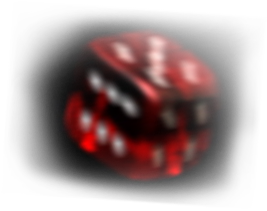



Have you ever come across a casino that operates without offering any card games? We bet it’s impossible to find anything like that. The odds are about 1,000,000,000:1. Of course, this is because card games are the main attraction for anyone who likes gambling. Just think about it… Playing cards is both exciting and dangerous. It’s a perfect mix of chance and skill. Poker influencers win so many millions on the world-class tournaments that it’s barely possible to believe what they’re doing: this is why they are such inspirational figures to so many of us!
But have you ever thought about how and where it all started? Who invented cards? How did they spread the world? And how many years have people been playing cards already?
Wait. We know you don’t want a boring history class. But why would you want to know the origins of card games? Because knowing the roots never hurts! Seeing cards from a different perspective helps you grasp the true essence of these games; and eventually, you’ll find them easier than you thought, we promise! And the result…? More winnings, of course! So kick back, relax, and imagine yourself watching a movie…
Chinese people have a long tradition of contemplating the forces of nature. They have also tried to mimic whatever they thought was mightier and built to last. In order to survive, they had to merge spiritually with everything around them. In their martial arts, their wars, their day-to-day life. Sometimes it would be better to stand strong like a mountain, while other situations could be handled better by flowing like water or leaning like grass under the wind. But how did they know which behavior to choose and when? They would ask their wise men, who would perform something like a fortune-telling ritual, by randomly throwing of sticks or coins. When destiny decided the outcome, they would try to interpret it and give useful recommendations.
Ancient Chinese researchers have suggested that the oldest Chinese cards were a variation on tile games like Go. The classes of society and bureaucrats matched their wits by playing these games.
Presumably, there was also another level of playing cards, which was more like a game of chance, or a trick-taking game. Some ingenious people printed cards of different “coin” values. The oldest written notice found in China mentions two men playing only nine cards. Unfortunately, the rules of those games are now lost. So we can’t tell for sure the reason they were playing, nor have we any way of knowing how the game in question was actually played.

The oldest card games might have been objects that players could wager, and not only objects for playing with. The oldest known set of the card game rules relates to Madiao, which dates back to the 15th century. By that point, there were 38 cards in a deck.
As you might already know, Chinese people were keen on numerology, so this deck of cards also seems to have a rather deeper symbolic meaning. The magic number was 9 (maybe because it was supposed to help you get rich?) – a suite of nine coins, nine strings of coins, nine myriads (10,000) of coins. Nine coins were the lowest value, and 1 was the highest. Yet, there was also a suit of 11 cards of tens of myriads and more. Two of the highest suites pictured characters of different ranks. All the cards imitated Chinese banknotes of the time.
These mysterious Chinese cards which had all manner of coins, characters, and symbols on them were then taken by a wave of nomadic tribes to South Africa, and then to Europe. These Turkish and Arabic peoples were born warriors. So, instead of whatever ideas the Chinese had originally meant to express, those who adopted these card games re-interpreted the faces of the cards, in order to create various kinds of “war games.” Unknown characters were changed to more familiar ones (in earlier decks, only the King and the Minister) which had the power to beat other cards. Meanwhile, cards from 1 to 10 had a power corresponding to their respective values. Sometimes, the values were reversed – with 10 being the lowest and 1 being the highest. Here, the number of suites increased to four, making up coins, wands, swords, and cups.
Most likely, trading connections brought those cards to Europe, where the gambling tradition had already been popular for centuries. And while local Christian authorities tried to gain full control over people’s minds, they loved gambling just like their ancestors did. It was a popular way of having fun, socializing, seducing, and winning money (or drinks). Unfortunately, the lower classes of society were not allowed to play: on pain of death! Meanwhile, the residents of those luxurious palaces all had the chance to play without restrictions. The initial deck was expanded by pip cards and Jokers to 52 items. Later, the occult Tarot deck became hugely popular, counting from 60 to 97 cards. The finest decks were hand-painted, each set being entirely unique, with inclusions of gold and other precious materials.
The Age of Enlightenment brought more self-awareness, as well as interest in science; not to mention a more humanistic vision of religion as well. More people were able to read and write whatever they wanted. The card games and other gambling activities became a source of inspiration for those pioneering mathematicians who dared to question how probability worked. But since those times, card games seemed to have lost their allure of forbidden fruit. Artisan card decks were no longer in fashion. Standardized suites had lost their esoteric appearance, as well as something of their early tendency to reflect the cultures of the different countries where they were being played. However, the cards didn’t die. Instead, they survived as a socially acceptable way for adult people to play. And of course, the financial interest of casino hosts did play a vital role in promoting card games as well.

We are all different. But even so, there’s a universal language of card games. However surprising their sweeping success may seem to so many of us today, they have spread across the globe and survived in various contradictory cultural backgrounds. However, each individual country has also seen people changing the games to suit their own preferences. So as a result of this long process of evolution throughout the world, the number of the variations of any one particular game sometimes seems impossible to measure.
So the only thing we can do here is to bring you these stats about how many of each card game type we’ve managed to count:
Today, card games are largely regarded as an essential part of the gambling culture. Card games have a very close association with the usual vicissitudes of wins and losses that gamblers are so well acquainted with.
In the 1990s though, traditional cards experienced another boost in popularity – kids played it, grandmas loved it, younger people used it for romantic endeavors. It was a fun way of spending time with friends, whether throwing real money bets or exchanging wishes and collectibles. But then, the Internet came along and changed all the rules! And that was all fair enough: because with such a variety of things to do in our highly developed world, card games just seem to that little bit less of a thrill than they were before. And while card games are going digital like pretty much everything else today, users end up locking themselves away in their virtual accounts, enjoying the mere illusion of being around other people. On the other hand, nowadays anybody can “break the bank” without even leaving the couch!

‘Nevada’s Black Book’ is the name of a book used to identify undesirable casino visitors, and it includes names of swindlers who have managed to cheat while playing in casinos. The Black Book is officially titled “List of Excluded Persons from the Gambling Control Council in Nevada.” The first edition was published in 1960, containing […]
As we get closer to the Christmas holidays, businesses are rushing to capitalize on the festive season by making some exclusive promo offers, as well as offering the customers some great bonuses. And the gambling industry is certainly participating in this Christmas-inspired trend – the world’s leading online casinos are “decking” their flashy websites with […]
People are constantly pursuing happiness and peace; and so, they tend to experience a lot of anxiety and fear about their well-being, and indeed about life in general. This is what makes them follow so-called superstition: a category of false beliefs that are founded upon an irrational view of the world, as well as upon […]
It might have taken some time for cryptocurrencies to claim their rightfully earned place as the number one payment option of the internet age; but once their popularity spiked and they finally became such an eminently hot topic, it was clear the internet currency world would never look the same again.Related Posts So, Are You […]
If you love gambling and have been to a land-based casino at least once, you may have thought about becoming a dealer. Playing the same game but from the opposite side, while communicating with other players, sounds like a dream job, right? A dealer is a straightforward job, and you will be the heart and […]
On Monday September 14, MGM announced that it plans to open its first smoke-free casino at the end of September, when Park MGM will finally reopen its venues to players and tourists. The resort comprises around 2,990 rooms and various restaurants, and it’s set to be reopened on September 30. The venue has been closed […]
Online gambling has undoubtedly taken a place of true supremacy over the casino industry during the pandemic. And the reason for that is quite clear: online casinos are more accessible, and you can always count on some encouragement from the casino administration to help you boost your game. However, this digital revolution has only been […]
The large selection of online gambling sites out there can make players somewhat puzzled, and give them a feeling of uncertainty about making the right choice of casino. Each online gambling venue offers its own conditions, games, and various bonuses, of course; but the most important thing is the reliability of the casino and the […]